Want to learn more about Pixar? Not ready to head to the parks? Check out this exhibit that teaches you all about the Science Behind Pixar!
The Exhibit
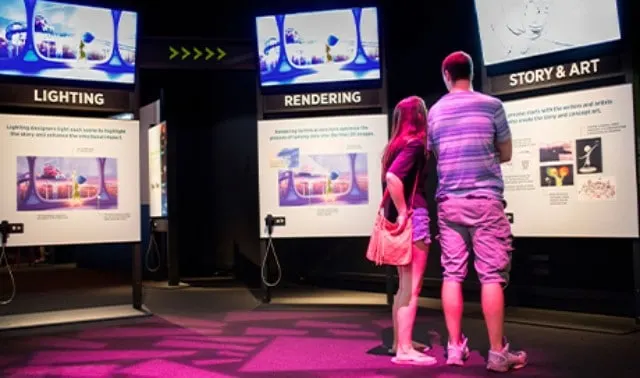
The Science Behind Pixar had it’s world premiere at the Boston Museum of Science in 2015. It was created by the Boston Museum of Science and Pixar Animation Studios.
This exhibit has traveled to seven cities around the United States, and a second version of the exhibit tours internationally. More than 2.3 million vistors have experienced this exhibit!
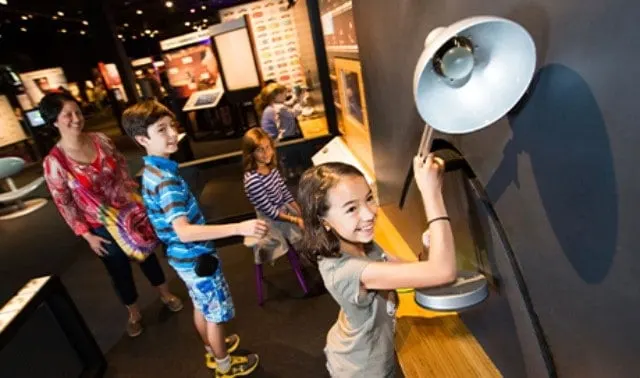
Jim Morris, the president of Pixar Animation Studios shared with North Shore Magazine “The Science Behind Pixar is an interactive exhibit that offers people an opportunity to understand how we make our films.
At Pixar, we use science, technology, engineering, art, and math—along with a significant dash of creativity and fun—and this exhibit is truly a great demonstration of how all those ingredients come together in our filmmaking process.”
This exhibit is interactive and shows you how science, technology, engineering and math are used by the computer scientist and artists to make the films we love. With eight sections to the exhibit, there is over 50 interactive elements.
Boston Museum of Science

The Science Behind Pixar is currently on display at the Museum of Science in Boston, Massachusetts. Museum visitors can enjoy this exhibit through September 6, 2021.
Be sure to reserve your ticket ahead of time, as this is a requirement to visit the museum. Tickets can be purchased online, 24 hours a day.
Visit the museum’s admission page HERE.
Capacity to the museum is limited, so be sure to get your ticket early. The Museum of Science recommends getting your ticket two to three days in advance.
When purchasing online you will be prompted to add a timed ticket for the Science Behind Pixar to your cart, be sure to add this option during your check out process. The Science Behind Pixar is included with your admission to the museum.
Virtual Exhibit
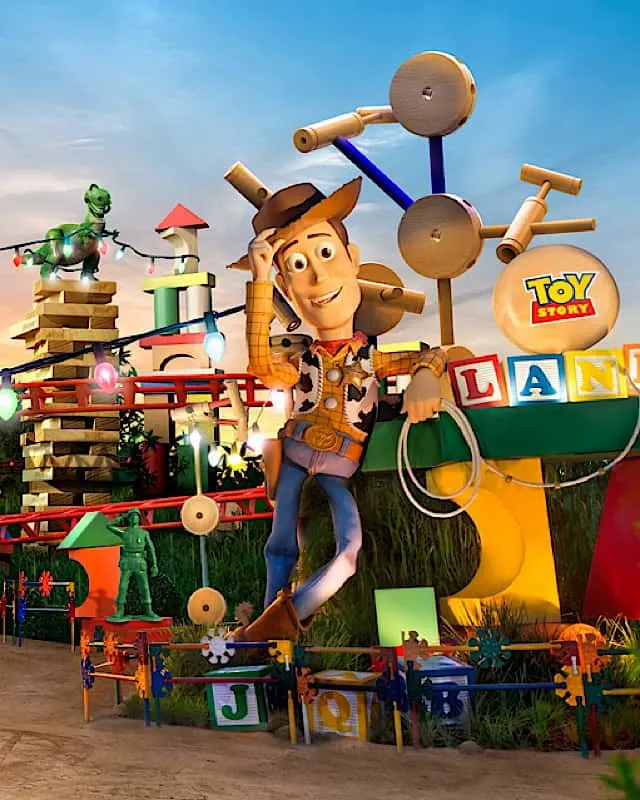
Not local to New England? Won’t be able to visit the exhibit? No worries!
When you visit the Science Behind Pixar’s website you can virtually explore pieces of the exhibit! I love this and have enjoyed exploring all of the information about how a Pixar film comes to life!
Sections of the Exhibit
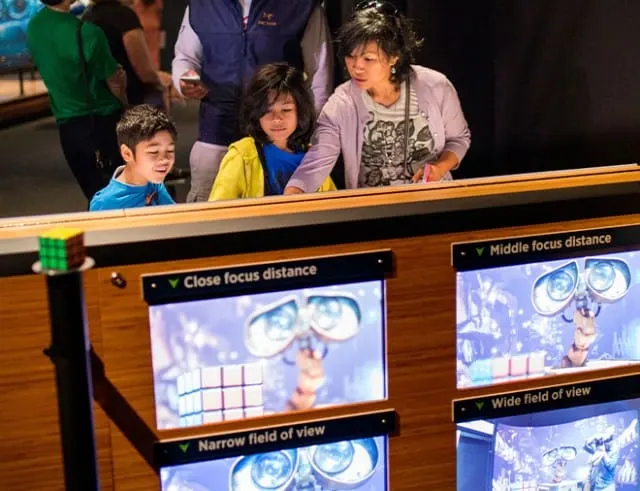
The exhibit is organized to follow Pixar’s production pipeline. The sections to the exhibit are Story & Art, Modeling, Rigging, Surfaces, Sets & Cameras, Animation, Simulation, Lighting, and Rendering.
Watch this video to see how they put it all together.
Below is a breakdown of what you can expect to see and learn in the virtual exhibit.
Story and Art
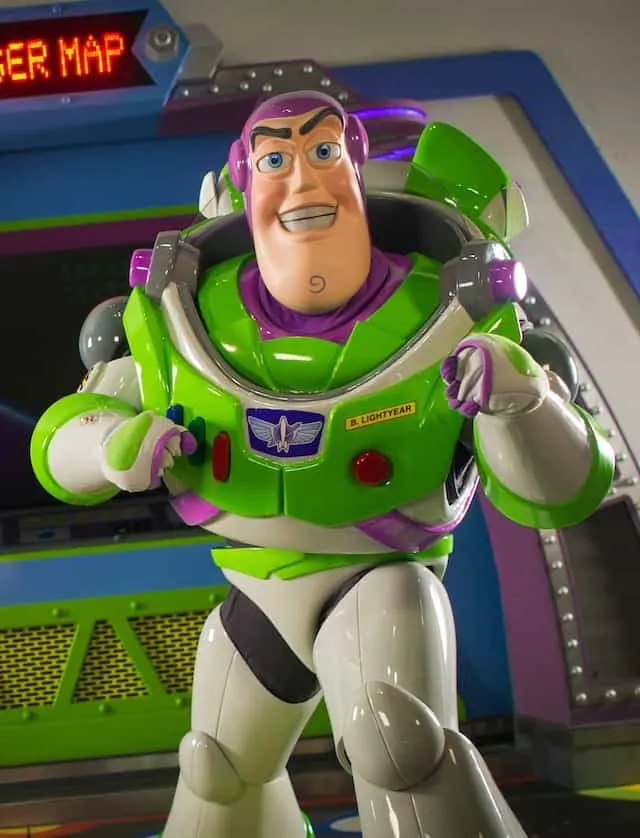
When the story phase occurs, the plot, camera angles and pacing gets determined. Check out this video of Joy from Pixar’s Inside Out.
Modeling
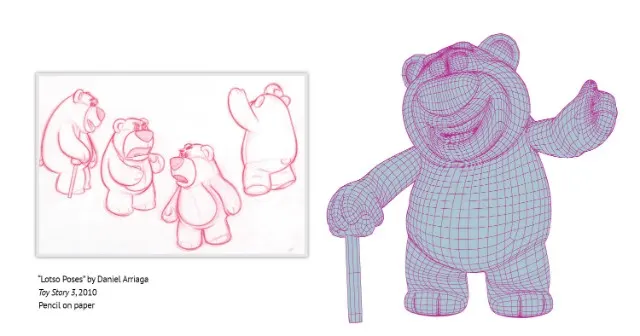
When a character is created the artists make sketches and clay modelings of what they want the character to look like. The digital modeler then creates a 3D model.
This activity is a fun one! Be sure to visit this page as you can watch videos about how the digital modeler does their magic. There is also an interactive activity where you can create a model with virtual building blocks!
Rigging
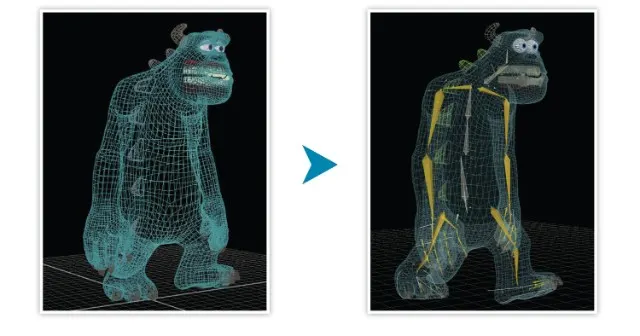
Don’t know what a digital rig is? I didn’t either until I explored this exhibit.
The Science Behind Pixar website states:
Digital rigs are the virtual bones, joints, and muscles that allow models to move. It’s kind of like the strings on a marionette. A good rig has just the right amount of flexibility. Without the right controls, the animators can’t create the poses they need. Too much flexibility makes posing the model too time consuming.
Be sure to check out the activity of rigging on the interactive virtual exhibit. Here you can select a Pixar character and choose different arm rigs to get a desired motion.
Surfaces
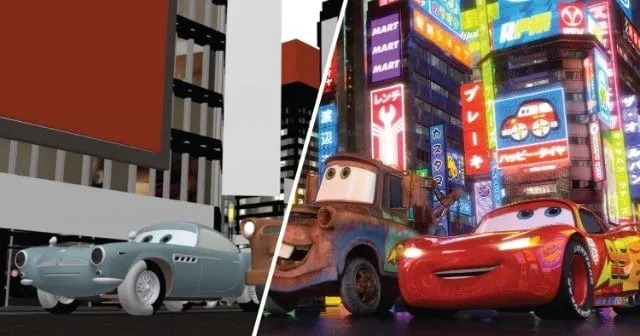
The surface of the object is different than it’s shape. Surfacing Artists play apart in each aspect of an individual character. They use Mater as an example, “One shader may define Mater’s underlying brown color, another his rough texture, and yet another puts the gleam in his eyes.”
Sets and Cameras
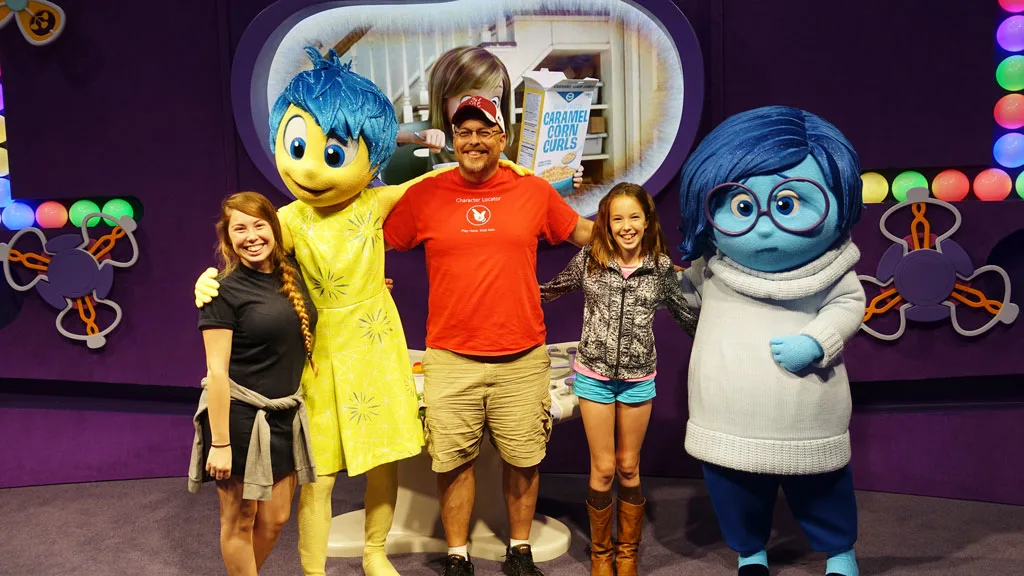
At this point in developing, the production camera angles are finalized. The set designers help tell the story by building a virtual environment. The camera angles determine what we see in the film.
Watch this video on sets and cameras!
Animation
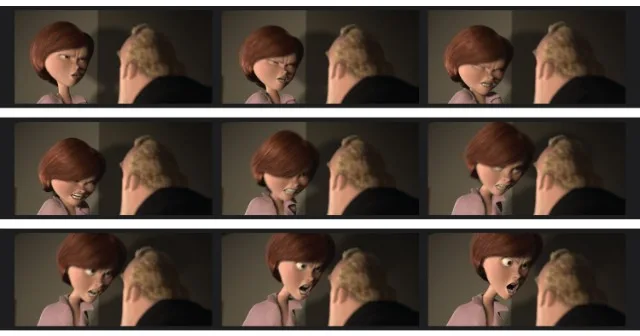
I think this is one of the most interesting pieces of putting a Pixar film together. The Animators are the ones who make the characters act and really bring the story together.
Simulation
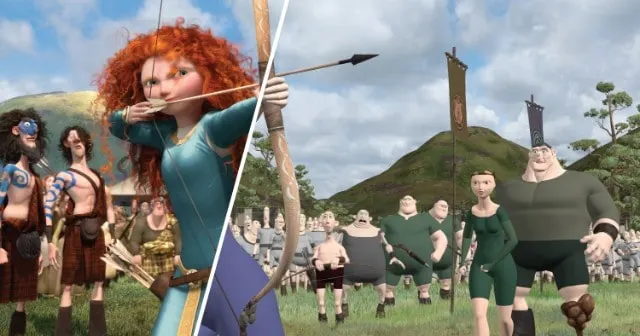
Simulation technical directors make a scene believable. This is done with motion of things around the character. For example a characters clothes or hair.
In this video, simulated effects are Joy’s dress, the fireworks, and the train engine.
Lighting
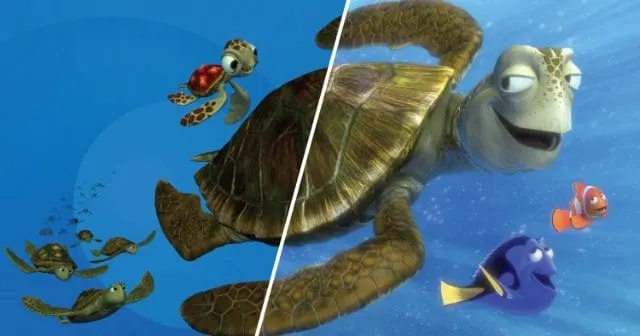
The lighting designers show us where to look and help create an emotions in the story. The Science Behind Pixar’s website states that a lightning technical designer:
have to program in all of the individual effects of lighting such as where it casts shadows, how it reflects off shiny surfaces, and how is attenuates over distance in order to achieve the desired artistic effect.
Rendering
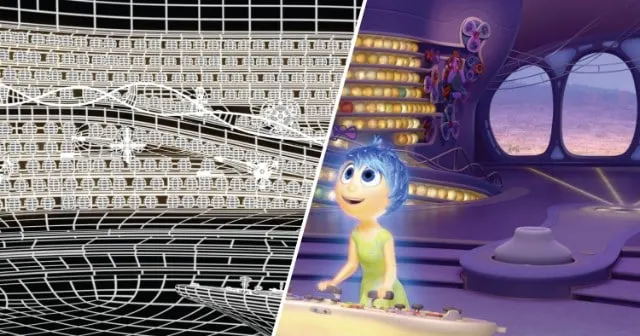
Rendering is the final process in putting the pieces together. This process makes the data and programming into the images we see.
Conclusion
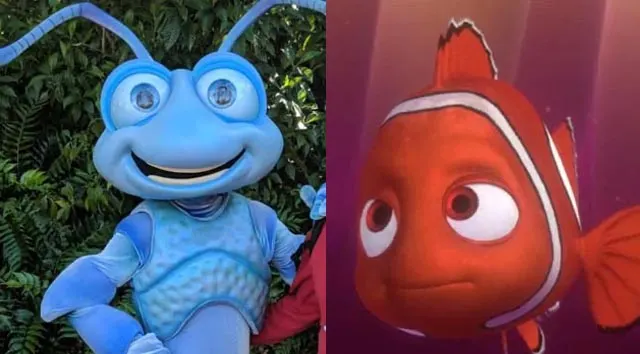
This exhibit has gotten great reviews. It looks like a lot of fun and a great learning opportunity.
My family has enjoyed all of the online pieces to this exhibit. I loved watching and learning how they put the movies together to make the magic that we all love.
I have only discussed a few of the activities that you can experience in the virtual exhibit. Be sure to check out them all!
The Science Behind Pixar is at The Museum of Science in Boston until September 6, 2021. Be sure to visit or check out the virtual experience before it is gone!
Have you seen this exhibit? Are you planning to visit the website before it leaves Boston? What did you think of the Virtual Exhibit? Let us know on the Kenny the Pirate Facebook page. Don’t forget to join the KtP crew page too!
-Heather Alosa
Sources: Sciencebehindpixar.org and mos.org
Discover more from KennythePirate.com
Subscribe to get the latest posts sent to your email.



What do you think?